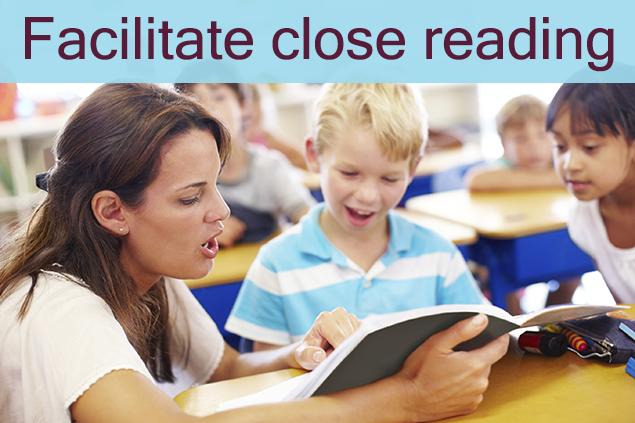What is Close Reading?
Posted by Network Support · Leave a Comment
Close Reading in the classroom is a technique in order to help students better understand a text. Challenge your students with Close Reading to read with a deeper understanding.
The term ‘Close Reading’ refers to the process of an in depth analysis of a text, by which the meanings or layers are uncovered. This in turn helps to improve the understanding of the text. Students are encouraged to use the Close Reading strategy to methodically analyze and critique the text and go beyond what is observed on the surface.
What does Close Reading do?
It helps students to:
1) Read the text carefully and to identify the explicit meaning and make inferences from it. To make conclusions while citing evidences from the text.
2) Identify the central ideas or themes and summarize the key details.
3) Analyze the connections within the text (between characters, events and themes) and understand how they progress.
4) Improve their vocabulary, by identifying, interpreting and understanding the meanings of words and phrases used within the passage. Students are encouraged to explore these meanings in relation to the passage.
5) Examine the structure, by focusing on sentences, paragraphs and relation of the text to the larger portion ( e.g. chapter or scene) of the content.
6) Evaluate the passage from the perspective of the author and identify the style of writing.
Steps of Close Reading
The Close Reading strategy can be taught in these three simple steps:
First Step: Understanding the gist of the text
You can start by encouraging students to take a few minutes to review and explore the text and familiarize themselves with it. This is followed by the first reading, in which students are instructed to get the gist of the content.
Second Step: Reading deeply
During the second reading, students are instructed to read closely and analyze the text for its meaning and the contextual use of words and phrases within a sentence or paragraph. They are taught to evaluate the author’s style of writing.
Third Step: Finding evidences
For the third step, the students are given questions and the answers lie within the text. Students are to frame answers by citing evidences from the passage. These answers are then written down.
You can also conduct an additional reading to improve the oral reading fluency, as fluency has been reported to be an indicator of comprehension. To finish with, conduct a book check or an end task to determine the student’s proficiency and whether they are able to answer questions from the text.
Tips for Close Reading
1) Use short passages that are interesting and meaningful. Long passages may cause students to lose their focus.
2)Use questions to stimulate thinking and analysis. While teaching the strategy, you can frame questions to direct students’ thinking. But with practice, students should be taught to frame their own questions and seek the answers from the text.
3) Combine Close Reading with other strategies like the Think, Pair,Share strategy to facilitate discussion among students. In doing so ideas are transferred.
By encouraging Close Reading in the classroom, we are helping our students to be independent readers as well as improving their readiness for colleges and careers.
Like this article for teachers?
Browse the Professional Learning Board COURSE CATALOG to find related online courses for teachers in your state. Professional Learning Board is a leading provider of online professional development classes that teachers use to renew a teaching license or renew a teaching certificate.





